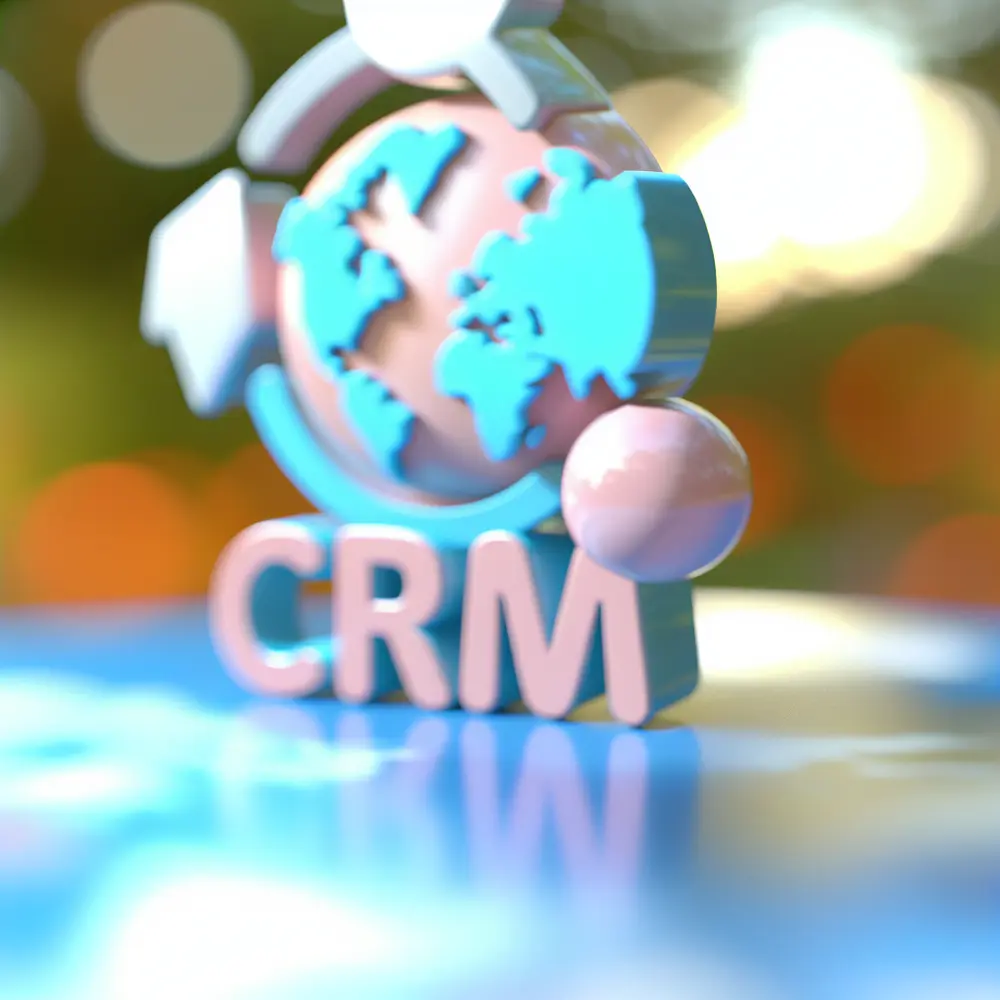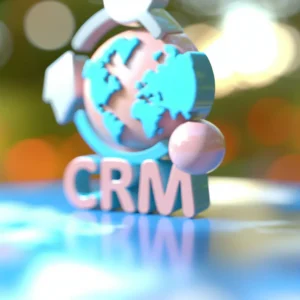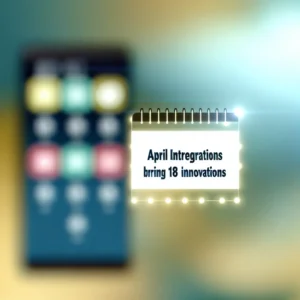Choosing the right Customer Relationship Management (CRM) software involves more than just comparing subscription prices. Many business owners overlook hidden costs that can significantly impact their budget and the overall effectiveness of their CRM implementation. Understanding these costs empowers you to make informed decisions that align with your business goals.
You may initially focus on the visible expenses like monthly fees, but hidden costs associated with integration, training, ongoing maintenance, and productivity can accumulate over time. Neglecting these factors can lead to financial strain and operational inefficiencies that affect your bottom line. In this article, you will discover how to identify and address these hidden costs effectively.
By analyzing the true expense of CRM systems, including options like CRM for WhatsApp, you’ll gain insight into making smarter investments that enhance your team’s performance and customer relations. Let’s dive into what you need to consider when it comes to the hidden costs of CRMs.
Understanding the Hidden Costs of CRMs
The hidden costs of CRMs extend beyond the initial pricing. When businesses invest in these software tools, they often overlook numerous indirect expenses linked to implementation, training, maintenance, and integration. Recognizing these costs is essential for a thorough evaluation of CRM systems and their impact on overall business operations.
Software implementation presents one of the most significant hidden costs. For example, NetSolutions Corp underestimated these expenses when adopting a new CRM. They incurred a 30% higher total cost due to additional consultancy fees and process redesign, causing delays in their operations.
Training staff on new CRM functionalities also represents an overlooked expense. Effective utilization requires employees to understand the system fully. In the case of TechEnhance Ltd, investing in extensive training sessions improved staff proficiency, leading to a 25% increase in their CRM adoption rate and a noticeable boost in customer engagement.
Moreover, maintenance costs associated with CRM tools can accumulate over time. Regular updates and troubleshooting require ongoing financial input. When HealthTech Innovations integrated their CRM with marketing automation tools, they faced an additional 20% increase in operational costs, impacting their budget planning.
Lastly, reduced productivity during the transition to a new CRM can be a significant hidden cost. Employees at CreativeMedia Agency reported a temporary 15% drop in productivity during their CRM rollout—this caused a notable dip in revenue during the adjustment phase. Recognizing these factors will aid in assessing the true value of a CRM for your business.
Understanding CRM Pricing: What’s Beneath the Surface?
When evaluating CRM pricing, consider both immediate subscription fees and long-term hidden expenses. Ignoring these additional costs can strain your budget. For instance, integration fees, user training, and ongoing support can quickly escalate the true cost of ownership.
Integrating your CRM with existing tools presents a critical hidden cost. LogisticsPro faced additional expenses of 40% when integrating their CRM with email marketing and accounting platforms. IT assessment before integration can mitigate surprises later.
User training is another vital aspect of CRM pricing. Employees may require extensive training to fully utilize features, which could lead to indirect costs through lost productivity. By investing in comprehensive training, MarketEdge saw a 15% reduction in training time, leading to quicker user adoption.
Ongoing maintenance and update costs also warrant attention in any CRM pricing analysis. Companies should Verify if software updates are included in subscription fees. If not, planning for these expenses is key to financial sustainability. InnoTech learned this firsthand when updates added a significant cost to their annual budget.
Customer support can add another layer to CRM investment costs. Many businesses discover standard support is insufficient, resulting in plans for premium support, thus inflating costs. Ensure your CRM agreement specifies these details to avoid high expenditures later.
Software Implementation Costs: More Than Just a One-Time Expense
Many overlook the full spectrum of software implementation expenses when adopting a CRM. While initial pricing and setup fees attract attention, long-term implications extend far beyond these apparent costs. For example, Blueprint Solutions faced unexpected expenses due to delays in onboarding staff, leading them to rethink their budgeting strategies.
Employee training is a commonly underestimated aspect of implementation. Neglecting adequate training can lead to resistance to change and lower morale. When Industry Leaders Corp prioritized formal training, they mitigated resistance, achieving an 18% improvement in user satisfaction.
The integration of CRMs with existing business tools often incurs substantial costs. Many organizations, like DynamicRetail, faced hidden fees tied to custom development work, which required additional budgeting for seamless functionality. Identifying these components can make a significant difference in total implementation costs.
Data migration costs also factor into the hidden expenses of CRM adoption. Poorly executed data transfers can lead to inconsistencies, further straining resources. ServTech allocated 25% of their budget on data cleaning, emphasizing the importance of planning this stage properly.
Ongoing maintenance fees should not be forgotten in the cost evaluation. Regular updates and support beyond the initial contract can introduce strain on budgets. Businesses like AlphaCorp encountered unexpected costs for advanced features and troubleshooting services. Reviewing contracts thoroughly is vital to manage these aspects effectively.
Training and Onboarding: The Underestimated Costs of CRM Adoption
Training and onboarding of staff represent one of the most significant yet overlooked expenses in CRM adoption. Customizing programs to ensure employees understand the system boosts success rates. For instance, InsightAnalytics tailored their onboarding, resulting in a remarkable 30% increase in user confidence.
New users often experience a steep learning curve that directly impacts productivity. For VisionaryWorks, investing resources in workshops and online courses significantly improved their operational metrics, reducing training time by 20%.
The indirect impacts on employee morale and engagement are also critical. Frustration from an ineffective onboarding process can lead to higher turnover rates. Ensuring a motivated workforce necessitates comprehensive strategies tailored to individual user needs.
Ongoing updates to CRM systems make continuous training essential. This added commitment ensures employees stay adept at utilizing new tools effectively. GreenHome realized that budgeting for periodic training refreshers helped keep user knowledge up to date, resulting in a 10% boost in efficiency.
Lastly, investing in generic training materials can lead to underutilization of CRM capabilities. EcoGoods experienced capital loss when employees failed to adopt advanced features, highlighting the necessity of comprehensive and tailored training sessions.
Ongoing Maintenance and Updates: What Businesses Need to Prepare For
Understanding ongoing maintenance and updates is critical when evaluating hidden costs of CRMs. Regular updates ensure the system remains functional and secure, while neglecting this factor can lead to unforeseen financial burdens. For example, TechGurus faced unexpected costs related to security breaches due to outdated systems.
Training staff on new features incurs additional expenses. E-learning modules brought success to ProServices, reducing downtime caused by employee adjustment to new features by 15%, thereby enhancing operational efficiencies.
Cost considerations for ongoing technical support are essential as well. Access to IT support is crucial since downtime can affect productivity and sales. FreeFlow Logistics learned this when outages resulted in lost sales, prompting them to evaluate their support options thoroughly.
The scalability of CRM solutions adds more complexity. As businesses grow, their CRM needs may evolve, impacting ongoing maintenance. Challenge Solutions recognized these expenses when expanding, deciding to invest in comprehensive systems early for future adaptability.
In summary, when contemplating CRM investments, acknowledging maintenance and update responsibilities is paramount. By preparing for hidden costs, organizations can make more informed decisions and sidestep unexpected financial pitfalls associated with implementation.
Opportunity Costs: What You Might Be Losing
Opportunity costs linked to CRM systems can bear significant implications for your business’s financial health. Lost sales opportunities and inefficient resource utilization often stem from inadequate employee training. NextGen Corp neglected proper onboarding, resulting in a 20% drop in sales during the CRM transition.
Disruption in workflows during CRM integration can hamper efficiency. RetailTrend faced significant bottlenecks due to poor planning and integration, which prompted customer dissatisfaction and lost revenue opportunities, equating to a 15% decline in orders during the initial rollout phase.
Choosing a CRM with limited scalability can lead businesses to incur significant transition costs later on. StartSmart learned this the hard way when they had to shift to a more scalable system within a year, affecting customer data and requiring a complete retraining of staff.
Additionally, factoring ongoing maintenance and subscription costs are vital for accurate budgeting. BigBen Enterprises faced a budget crisis when recurring fees approached 30% more than initially planned, impacting their bottom line significantly.
In essence, recognizing the hidden costs associated with CRMs helps you make better strategic decisions about business tools. By accounting for opportunity costs and preparing for potential pitfalls, you’ll navigate the complexities of CRM implementation and maximize profitability.
Choosing the Right CRM: Balancing Costs and Benefits
During your evaluation of CRM solutions, it’s crucial to grasp the full scope of long-term expenditures. While options vary in price, hidden costs often accompany CRM selection. Ensuring you account for ongoing expenses like training, maintenance, and upgrades can prevent surprise financial strains.
Implementation introduces various hidden costs, as time spent on configuration and data migration can impact overall expenses. Synergy Inc. dedicated hours to these processes, resulting in lost productivity that limited their sales targets, signaling the need for realistic budgets during implementation.
Limited scalability can raise hidden costs later, which FutureVision discovered when their initially affordable CRM couldn’t meet their growing demands. Advanced features for larger teams came at a higher price than anticipated.
Cloud-based CRMs carry ongoing subscription fees, which might lead to unforeseen costs over time. Assessing your budget in alignment with expected ROI is essential to avoid overspending on a service that doesn’t meet your long-term requirements.
Ultimately, comprehending hidden costs associated with CRMs, particularly options like CRM for WhatsApp, requires careful analysis. A thorough evaluation ensures that you select a solution that aligns with immediate needs and prepares for future growth. Collaborating with stakeholders will bring insights into necessary features while mitigating unnecessary expenditures.
Conclusion: Making the Most of Your CRM Investment
Understanding hidden costs related to CRMs is crucial for maximizing your investment as a business owner or IT manager. While CRM pricing seems straightforward, many associated expenses may not be immediately apparent, stemming from implementation challenges, ongoing maintenance, and the requirement of training to optimize system usage.
During CRM software implementation, consider not only the purchase cost but also allocated resources for setup. StreamlineCorp underestimated the time required for a seamless transition, resulting in a budgetary strain as costs began to accumulate.
Ongoing training costs for CRM users demand attention. Proper training is vital for leveraging features effectively, as CoreSolutions illustrated when training increased user proficiency, significantly enhancing their CRM performance and sales metrics.
Additionally, data migration and system updates have hidden pitfalls that businesses frequently encounter. Poorly managed data transfers can necessitate spending on troubleshooting, which inadvertently raises operational costs.
Lastly, exploring tailored solutions like CRM for WhatsApp can prove beneficial. This tool integrates smoothly with existing processes while managing costs effectively, aligning with both immediate and long-term strategic goals. By understanding the full spectrum of expenses involved, businesses can navigate the complexities of CRM investment and foster greater returns over time.
For more information about effective CRM solutions, explore options like CRM for WhatsApp, which can help you manage customer relationships efficiently.









